
Introduction
The benefits derived from the Internet of Things (IoT) will accelerate as it becomes more widespread. One element necessary to facilitate a ubiquitous IoT is a sensor technology that allows the deployment of large numbers of sensors that are wireless, maintenance free, and inexpensive enough for use almost anywhere. This article describes such a technology, based on a tiny chip that incorporates passive sensing and wireless communication capabilities.
The term "Internet of Things" was coined by Kevin Ashton of the Auto-ID Center at MIT in 1999. He articulated a vision where even simple everyday objects could communicate with computers and over the Internet without human intervention. The initial focus was on radio frequency identification (RFID), a tool to track and count things in retail supply chains, but the vision always went beyond simple identification. Since then, of course, the phrase Internet of Things (IoT) has become widely used, and often in the context of sensor-based applications.
Many of those applications, and the sensors supporting them, have been reported in Sensors Magazine. The sensors are typically innovative, offer new levels of performance and features, and the they may be less expensive, either for the sensors themselves or at the system level. For many key stimuli, sensors are available in a wide range of price/performance options.
Unfortunately, in many potential sensor applications, even the least expensive sensors prove to be impractical. They may need wired connections that cannot be provided. If wireless, they may require batteries that create an unacceptable maintenance burden. And even an "inexpensive" device may cost too much for monitoring inexpensive items or for systems needing large numbers of distributed sensors. Yet those applications are crucial for the realization of a truly ubiquitous IoT.
Wireless Peel-N-Stick Sensors
Those applications need a new kind of sensor, one that is wireless, battery-free (passive), and very inexpensive. With those goals in mind, one example is RFMicron's single-chip passive RF sensor called the Magnus S chip that can be used to produce a wide variety of single-chip sensors by simply repackaging the product for the application of interest. The chip communicates with off-the-shelf readers using the industry standard UHF RFID protocol (ISO 18000-6C, commonly known as "Gen 2"). In addition to the Gen 2 communications engine, the chip incorporates Chameleon technology that both optimizes the RF communications and provides the sensing capability.
The chip is small, measuring about 0.89 mm², and is self-contained. A fully functional wireless passive sensor may consist of nothing more than the Magnus chip and an antenna, essentially the same components needed for conventional identification-only RFID tags. The difference is in the antenna designs, which vary depending on the specific stimulus to be sensed, and the chip, which monitors the antenna for changes in electrical characteristics caused by external factors (the stimulus). We call them Peel-N-Stick sensors because they are inexpensive, easy to deploy and use, zero maintenance and will, in fact, often be applied by peeling off the backing and sticking the sensor to a surface.
Application Example: Moisture/Leak Monitoring
Figure 1 shows one example of a Peel N Stick Sensor, in this case a moisture sensor. A version of it is being used in a program for a manufacturer of equipment used in outdoor environments.
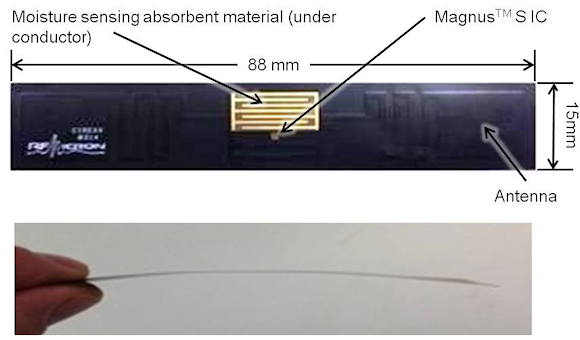
Fig. 1: A Peel N Stick Sensor for moisture based on the Magnus S chip needs no battery or wires.
The equipment incorporates internal components that need to be protected from rain and water spray, and one of the manufacturer's outgoing quality checks is to verify the weatherproofing. The process is simple in concept: spray the machine with water and check for moisture that gets past the seals. In practice, though, the post-exposure test for moisture has proven both expensive and error-prone. The moisture check involves a manual probe inserted into several locations where water is likely to pool. The probe must be correctly positioned in order to get an accurate reading, requiring significant time and labor cost to meet the manufacturer's quality requirements.
Employing Peel-N-Stick sensors for moisture will significantly improve this part of the manufacturer's quality testing. The sensors can be applied during assembly in the precise locations required, and will be interrogated automatically after the water spray exposure, providing more consistent results with less test labor and fewer false readings that lead to unnecessary rework. In addition, the sensors can remain in place for the life of the equipment, supporting future moisture tests if desired. And like any RFID tag, the sensors can be used to carry the machine's model number and/or serial number.
This application does not require a great deal of precision from the sensor. The manufacturer simply needs to know whether the sensor is dry, a little bit wet, or soaked. But the sensor can provide more resolution than that if necessary. Figure 2 shows the results of a simple test of the sensor's output vs. room humidity. Clearly there is more resolution available if an application needs it.

Fig. 2: The moisture sensor of Figure 1 returns a Sensor Code that varies with relative humidity.
How Does It Work?
A Peel-N-Stick sensor is composed of an antenna and a Magnus S sensor chip (see figure 3). In any RF system, the ability to communicate depends on an electrical (impedance) match between the antenna and the transmitter/receiver (in this case, the Magnus S chip). When the impedance match is good, the antenna can deliver enough power to the chip to support the chip's operation and response.
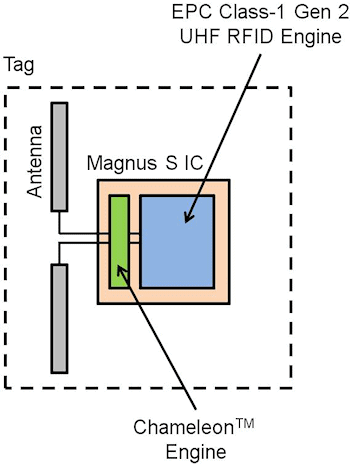
Fig. 3: A Magnus S chip-based Peel N Stick Sensor requires
only two components, the chip and an antenna.
In all RF systems, an antenna's impedance can be affected by external factors, which is one reason why mobile phone and radio signals sometimes drop out. To mitigate those effects, the Magnus S chip includes a set of tuning capacitors between the antenna ports and the Gen 2 communications engine (see figure 4). The Chameleon Engine adjusts the chip's input impedance by switching the capacitors in or out of the circuit to keep the chip in tune (matched) with the antenna. That is helpful from a communications standpoint, but also facilitates sensing when the chip is connected to an appropriate antenna.
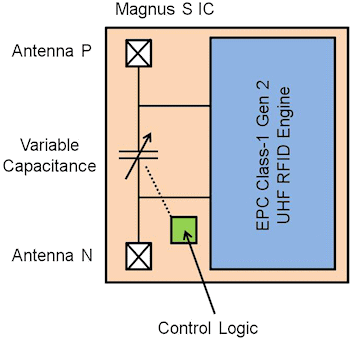
Fig. 4: A variable capacitance at the chip's antenna terminals
keeps the sensor tuned for RF communications while providing
a measure of stimulus being sensed.
An antenna's impedance can be affected by a variety of outside influences, depending on the antenna's materials and construction. For most RF systems, an antenna designer will strive to minimize the effects of those influences in order to maintain consistent RF communications. For Peel-N-Stick sensors based on the Magnus S chip, the antenna designer will instead take advantage of the impedance changes, using them as a sensor input.
The Chameleon circuit will make adjustments to keep the chip electrically matched to the antenna. More importantly, at least for sensing purposes, it will store and report the adjustment that was necessary to maintain the correct match. As a result, you can connect the chip to an antenna that responds in a predictable way to a desired stimulus and use the output from the tuning circuit as a sensor reading. For example, the sensor shown in figure 1 uses an antenna designed to be sensitive to moisture. When it begins to get wet, the antenna's impedance changes Chameleon circuit adjusts the chip's impedance in response.
The adjustment made by the circuit keeps the sensor tuned so that the speed (up to 500 tags per second) and range of communications (up to 10 meters for some designs) with the reader is unchanged. In addition, the magnitude of the internal adjustment, which is directly related to the degree of moisture present, is stored in a chip memory location called Sensor Code. The Sensor Code can be communicated to a reader whenever a moisture reading is desired. That is the Sensor Code shown on the Y axis of figure 2.
Going back to figure 2, it appears that the sensor is actually more responsive than needed for the wet-or-dry application described. Fortunately, it is a simple matter to modify the antenna design to reduce its moisture sensitivity and make it more robust in the application. On the other hand, if more accuracy were needed, the tag could be calibrated, either in manufacturing or during deployment. Since the chip can operate as a standard RFID chip with user memory, a calibration constant or multiple calibration values can be calculated in a known environment and stored right on the chip for reference when needed. The calibration strategy, like the sensor itself, can be designed to suit the needs of the application.
Small modifications can be made to alter the moisture sensor tag's sensitivity to wetness. It is also possible to design an antenna that ignores moisture and responds to, for example, pressure instead of moisture. The sensor in figure 5 is a pressure tag based on a different antenna design; it uses a small sheet of metal foil suspended over a portion of the antenna by a piece of compressible foam.
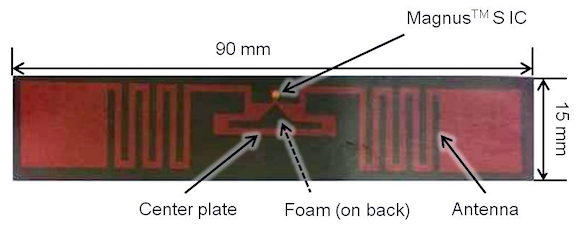
Fig. 5: A pressure sensor made with a Magnus S chip and metal foil on compressible foam.
When the foam is compressed by weight or air pressure, the metal gets closer to the antenna structure and causes an impedance and Sensor Code changes. Figure 6 shows its Sensor Code response vs. applied pressure.
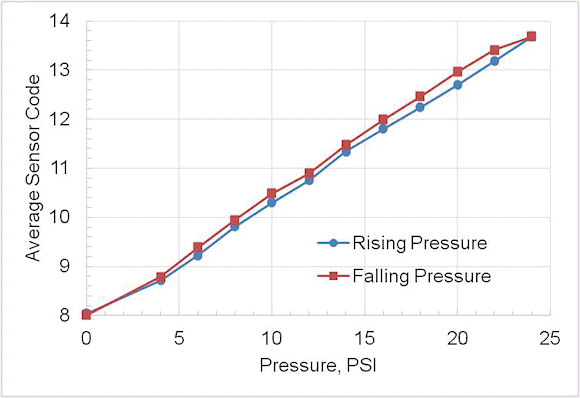
Fig. 6: The pressure sensor of Figure 5 returns a Sensor Code that varies with applied pressure.
For these, and many other types of sensors, the same Magnus S chip may be used. All that is needed for a specific sensor type is the appropriate antenna to which the chip is attached. Because multiple stimuli can act on an antenna at the same time, the antenna designer does need to be aware of the environment in which the sensor will be operating. Inaccurate results are a risk unless the sensor is designed with an understanding of the requirements and the environment of the intended application. A good design will be sensitive to the factor of interest and insensitive to other stimuli that might be present.
Design Approaches Support A Panoply of Applications
Peel N Stick Sensors can address a virtually unlimited range of applications. Any action or agent that affects or can be designed to affect an antenna's electrical characteristics can be exploited to make a sensor:
- Applications involving moisture abound, including water vapor detection, sensing of wet material stock when moisture can cause product loss or deterioration, sensing of moisture in applications sensitive to mold or corrosion, and detection of leaks in hard-to-access locations.
- Solid state films can be formulated to react to a variety of gases with a change in resistance. Those films can enable the construction of sensor tags that respond to industrially significant gases such as CO, CO2, NOx, H2S, O2, and Cl2. Films deposited onto an interdigitated antenna structure can produce sufficient changes in the presence of a target gas to allow the design of Peel-N-Stick Sensors.
- The pressure tag of figure 5 is based on a metal foil held over an antenna circuit by compressible foam. It can be used for air pressure sensing as in a tire, or for physical weight or force sensing. Increased pressure will compress the foam, allowing the foil to move closer to the antenna circuit and thus changing its electrical response. The same principle can be used to produce proximity sensors to detect movement.
- Mechanical distortion of the antenna itself causes a change in resonant frequency of the antenna, and the Chameleon Engine will adjust to accommodate the change. Applications are possible for alarms, stress detection such as for structural integrity monitoring, and inflation of flexible objects.
Many of the best uses for Peel-N-Stick sensors will be in places where sensors have not been used before. In nearly all cases, sensors will already exist for anything that a Peel-N-Stick sensor might measure. Plus, most of the time, existing sensors will offer higher resolution and accuracy. But in many applications, a basic sensing capability is more than adequate and the overhead needed to support conventional sensors is insupportable.
Summary
Over time, Peel-N-Stick sensors will become available for a wide variety of applications. Some of those applications will require just a few sensors and a single reader like the moisture sensors used to monitor leakage into sealed equipment. In other cases, vast numbers of sensors may be needed to monitor the condition of a structure or the environment in a facility. There will be a common theme for the sensors, though: they will be passive, wireless, easy to use, and inexpensive.
Peel-N-Stick Sensors will help make the IoT an internet of all things, not just expensive things. They allow sensors to be applied where wires, batteries, and multi-component circuit boards are cost-prohibitive. They will complement conventional sensors while not competing with existing precision sensors and be creating new opportunities to understand and control the world around us.
About the Author
Hal Steele is VP of Global Sales for RFMicron. He has 25 years of experience in the semiconductor industry focused on solutions for the wireless, embedded processor, and RFID markets. He can be reached at [email protected].
Related News & Articles
Econais Launches ProbMe WiSmart Secure Configuration Software, solutions for the Internet of Things
IPSO Alliance to Focus on How to Use IoT Open Standards
A Batteryless Sensor Chip for the Internet of Things
Vampires vs. Zombies or the Internet of Things
Express Logic's X-Ware Eases IoT Development